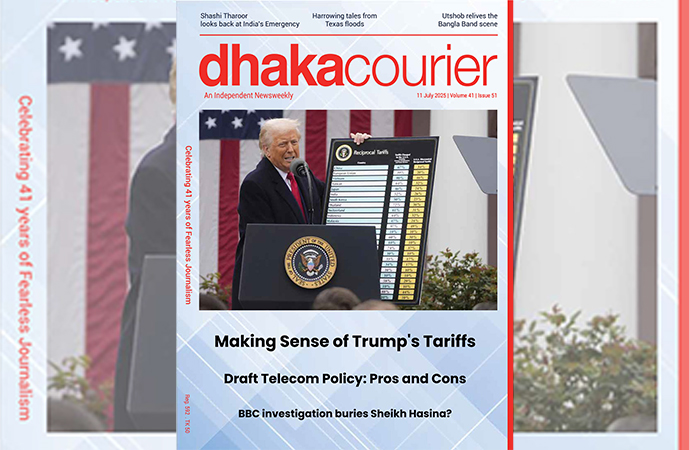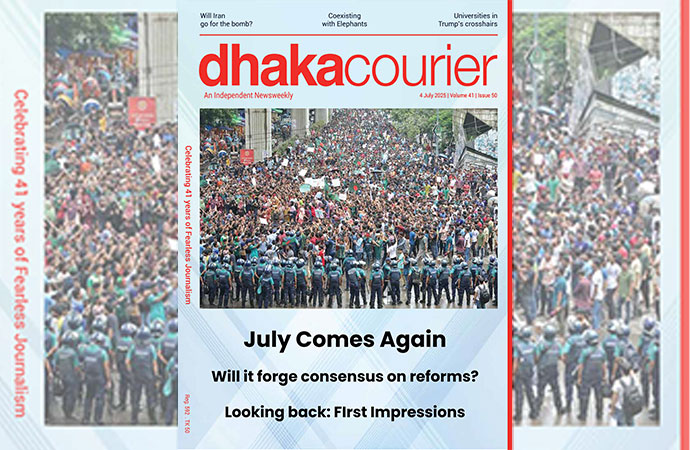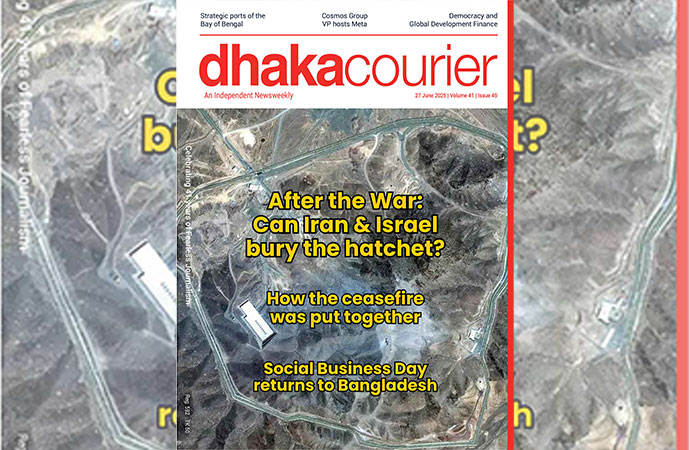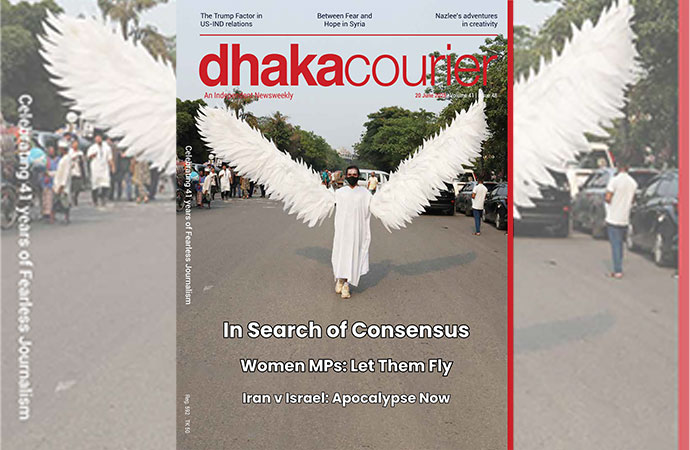Column

A view of the shrine of Sikh leader Guru Nanak Dev in Kartarpur, Pakistan.
The India-Pakistan relations have usually been remarkable for the lack of good news. Indeed, since the crisis over Pulwama in February, there has been a general deterioration. The nadir was reached with the decision of Prime Minister Narendra Modi's Bharatiya Janata Party Government's decision to alter the status of Jammu and Kashmir (as also Ladakh). The situation thereafter in that State led to a 'lock-down' that ultimately caused the broadening of the issue to include a close-door session of the United Nations Security Council. Be that as it may, all substantive contacts between Islamabad and New Delhi were halted. Trade was stopped. Diplomatic contacts were reduced to a minimal. Once again the two nuclear-armed states appeared to be at the brink of a disastrous conflict.
Until now. True to the nature of the ever shifting nature of their bilateral connections, a silver lining suddenly appeared across the otherwise dark clouds. It was an agreement the two countries signed on Thursday 24th of October. It was on the opening of a visa-free corridor linking the Punjab State in India with Kartarpur, about five kilometres inside of Pakistan. The purpose was to facilitate the pilgrimage of Indian Sikhs to Gurdwara Darbar Sahib, one of the holiest of Sikh shrines, which is located in Kartarpur. It was this place where Sikhism's revered founder Guru Nanak spent the last eighteen years of his life in the sixteenth century.
The corridor would vastly shorten the travel distance for the pilgrims, which earlier was only possible through a circuitous route involving the Pakistani city of Lahore, which is 120 kilometres away from the shrine. Such an opening featured very much in Prime Minister Imran Khan's mind in his early days of office, some say, as a sop to the Sikhs , also a religious minority community in an India currently being run on BJP's majoritarian Hidutva values. The time frame was important as the 550th birthday of Guru Nanak falls on 12th November, which understandably, would be expected to bring about a sharp upward spike in the number of pilgrims.
The pilgrims would not be travelling without having to comply with ample conditions. Some of these reflect the state of India-Pakistan bilateral political relations. They would not be allowed to carry knives or blades which would include kirpans, firearms, narcotics, liquor, literature, media items and flags and banners challenging territorial integrity of either countries. They would be required to return on the same day, and also not travel beyond the shrine, making abundantly clear that enhancing people-to -people contacts between the two nations is not an idea that currently rules the roost. The weight of the bags to be carries was limited to 7 Kg, so any kind of trading was ruled out. Being visa free, the US $1.50 vis-fees would be deemed to have been waived, but the Pakistanis insisted on a service-fee of US $ 20 per person as a sign of their revenue-earning proclivities surmounting any religious inclinations favouring another faith!
A good opportunity for a high- level bilateral contact was lost when it was decided that the two sides would hold separate events with their respective Prime Ministers to mark the opening of the corridor on the 9th of November. So, there is to be no chance of a Modi-Imran embrace, or even a handshake. Under the circumstances, the media would have to wat a long time for such a photo- opportunity. Nonetheless, it was the best possible arrangement in a bad bargain, which might not be so bad either, because it does point to certain positive circumstances.
Can these circumstances be the silver lining that some hope this opening affords across an otherwise dark cloud, and not just a lull before storm? The perennial rivalry between the two countries may be leading to a modicum of conflict-exhaustion on both sides. The recent Indian election results in the States of Haryana and Maharashtra indicate that the power of jingoistic nationalism as a vote-getting strategy may be beginning to erode. Prime Minister Modi benefited enormously from such sentiments in the Union elections. But now as the State poll results in the two Indian states and the underperformance of the BJP demonstrate, the voters are perhaps turning more towards issues that impact on their daily lives such as the economy. The call of patriotic passion might not forever arouse fervour in the military itself, where it was usually supposed to find most resonance, as is evidenced in the showing of poor BJP electoral results in Haryana, an important provider of personnel to the Indian forces. Similarly, while the Pakistanis have cheered Imran Khan's diplomacy at the United Nations and elsewhere on Kashmir, the people have begun to turn to domestic political issues as evidenced in the right -wing marshalling of political sentiments aimed against the government in recent times.
While not undermining the problem of Kashmir, or the travails confronted by millions of Kashmiris, a war between Pakistan and India, on this, or any other issue, is not an option. There is much chest-thumping on supposed successes in minor tactical combats by the media and enthusiasts on both sides. They often tend to forget that the level at which these conflicts occur can be raised at any time by either side through a policy decision, with possible horrendous consequences. India and Pakistan already have over 250 nuclear weapons between them. They are actually the only two nuclear-weapon countries who are expanding their arsenals. According to a co-authored research study of the Rutgers University conducted recently, if in an exchange India used 100 warheads and Pakistan 150 (both have such capabilities), an estimated 50 to 125 million people could die from direct effects. There would be millions more perishing from mass starvation, world-wide.
So, who would be the winner in this colossal destructive combat, dwindling in proportion even the horrors of the Biblical Armageddon?

























Leave a Comment
Recent Posts
The Northeastern Question
When secessionist movements sprang up across the Eastern European part ...
Trump’s Tariff: How far should ...
Will Bangladesh manage to get a last minute reprieve on its 'Trump tar ...
Rivers, Peaks, and Expressions – My Experience at th ..
What lies behind the alarming spike in violence agai ..
A Himalayan choice
Twenty Palestinians were killed at a food distributi ..